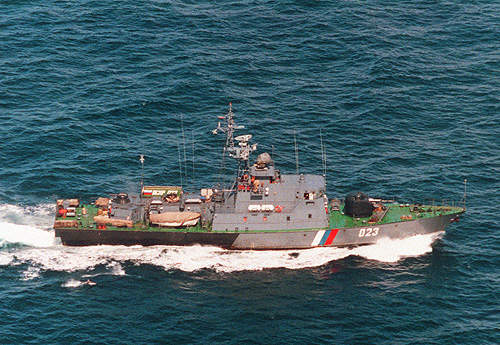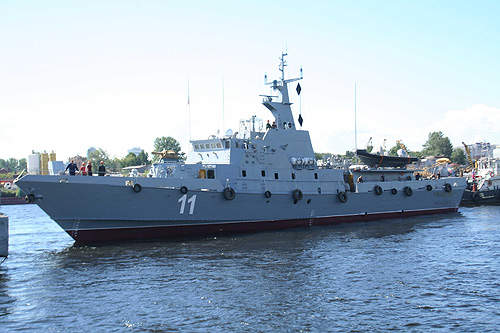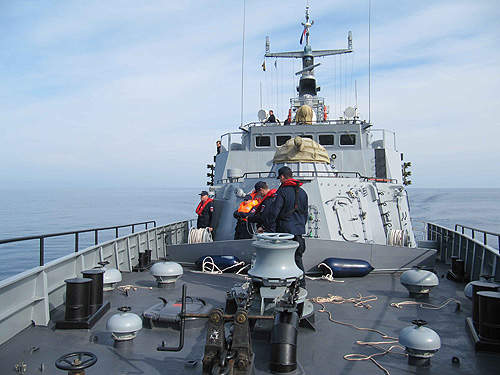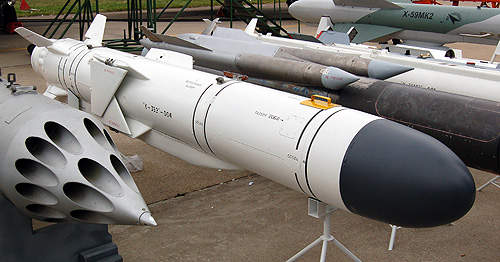Svetlyak-class boats are in service with the navies of Russia, Vietnam and Slovenia. The class includes patrol boats and missile boat in three projects, respectively designated 10410, 10411 and 10412. The three variants were built in Russia at Almaz Shipbuilding, Vostochnaya Verf Shipyard and Yaroslavskiy Shipyard.
The first boat entered service with the Russian Navy in 1988; by 2010, it had commissioned 26 project 10410 Svetlyak vessels.
One – Patrol boat PSKR-901 – was decommissioned in 1998 after it sank in storm at Korsakov. Almaz Shipyard, based in St Petersburg, launched a new ship named Krasnodarets under project 10410 in September 2010.
Two 10412 Svetlyak Class patrol boats were delivered to Vietnamese Navy in 2002. Vietnam placed an order for two boats in 2009; these vessels are under construction.
A 10412 patrol boat, Triglav, was delivered to Slovenian Navy in November 2010 as a repayment of Soviet debt to Former Yugoslavia. Two more vessels will be constructed by Vostochnaya Verf Shipyard in Vladivostok.
Design and features
Designed to carry out a variety of missions, the Svetlyak Class has anti-surface warfare and anti-submarine warfare capabilities. The automated diesel power plant provides a maximum speed of 30kt and a range of 2,200nm. The boats are designed to operate in moderate and hot climatic conditions. They can launch weapons in sea states up to five and sail in sea states up to seven.
Vessels in the Svetlyak class have an overall length of 49.5m, beam of 9.2m and draught of 2.2m. The full load displacement of project 10410 and project 10412 boats is 375t, while that of Project 10411 boat is 390t. This class can accommodate 28 personnel.
Svetlyak variants
Project 10410 patrol boats are operated by the Russian Navy and Maritime Border Guard. They are used to patrol littoral zones, protecting territorial waters and exclusive economic zones. These vessels can also be deployed in search-and-rescue, pollution control and fire-fighting operations.
The project 10411 missile boat is also designed to patrol littoral zones, but is additionally armed with anti-ship missiles.
The project 10412 patrol boat is an export variant of the Russian Svetlyak-class patrol boat. It can be deployed to protect natural resources areas and coastal lines of communications and also be used to escort friendly vessels. The patrol boat is powered by three MTU 4000 diesel engines.
fire-fighting operations.”
Weapon systems
Svetlyak-class vessels are armed with a 76.2mm AK-176M cannon, a six-barrel 30mm AK-630 gun mount and 16 Igla-1M surface-to-air missiles. The Uran-E anti-ship missile system on project 10411 missile boat can launch eight Kh-35E anti-ship missiles. These missiles can engage other missiles, torpedoes or surface ships within 130km.
Project 10410 boats also have two sets of MRG-1/DP-64-2 anti-saboteur grenade launchers installed. Two OTA-40A single-tube torpedo launchers are fitted on the patrol boats.
The Slovenian variant is armed with two AK-306M six-barrel 30mm gun mounts, two 14.5mm pedestal machineguns, 16 Igla-type MANPADS, the Shturm anti-ship missile system and a PK-10 chaff launcher.
Sensors and radars
The sensor suite integrates MR-123-02 artillery fire control radar and Liman navigational radar. The export variant is equipped with FR-2150W navigational radar. The boats are also equipped with hull-mounted and dipping sonars.
Navigation and communication
Navigation equipment includes a gyrocourse indicator, gyrostabilisation system, an electromagnetic log, a navigational echo-sounder, a radio direction-finder, a receiver-indicator of ground-based radio-navigation system and shipborne satellite navigation equipment.
Communications are supported by an automated communications system and mutual interference avoidance system installed. Other installations include an IFF system, a dead-reckoning tracer and a magnetic compass.
Propulsion
The ships are powered by a three-shaft diesel propulsion plant consisting of three diesel engines. Total power output is 16,200kW, and the system provides a top speed of 30kt and endurance of ten days.







